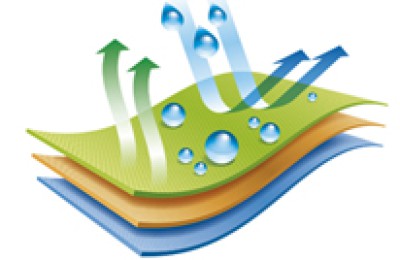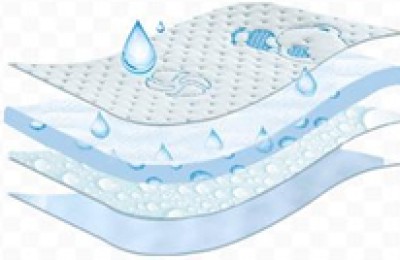The recent raw material market is very similar to the promotion season from April to June. The prices of raw materials will change slightly every week. The only difference is that in the early period, There were weekly price reductions and now there were price increases several times a week. It looks like the market is in peak season at the beginning of the year, but in fact, the current textile market is indeed off-season. It is somewhat difficult for textile workers to face rising costs during the off-season, especially since the number of recent orders is still showing a downward trend.
Compared with last year during the epidemic, orders were not optimistic
Last year, due to the global epidemic, regular textile foreign trade orders were deeply affected. Many textile companies said that the trade volume in the first half of last year fell by more than 50% year-on-year. Some textile company customers were even in areas hardest hit by the epidemic, and the trade volume once fell by 90%. However, the market is generally very optimistic about this year, believing that with the end of the epidemic this year, the textile market will usher in an explosion of demand. But in fact, half a year has passed, and the textile market has not performed to our satisfaction, especially since July.
“We mainly do domestic sales, orders now It is definitely much less than in the first half of the year. Most of the orders for the big domestic brands have been placed, and foreign trade is not easy to do now. The epidemic is serious again. At present, in addition to nylon, four-way stretch and other fabrics, there are also high-density and ultra-fine denier products. I feel that the sales this year are quite good, with well-made products ranging from hundreds of thousands of meters to 3-5 kilometers in average. The market has also entered the off-season, and the overall orders are relatively small.” said a textile trader.
Many other textile companies also said that although the order volume did not decline significantly compared with last year, it was not much different from last year. However, the price of textile raw materials last year was obviously not comparable to that of last year. This year is comparable.
Raw materials continue to rise, and some textile companies have begun to hoard raw materials
Following a spandex factory’s price increase of 2,000-3,000 yuan/ton on the 15th, Newstar, Taiguang Spandex, etc. also issued price increase notices, with price increases of 4,000 for 20D and 3,000 for 30D, which will be implemented on the same day! At present, the spot supply of spandex in Shandong, Zhejiang, Jiangsu, Fujian and other places is still tight, and preliminary orders continue to be handed over. Some manufacturers will not accept new orders for the time being and mainly supply high-quality customers. In terms of price, on July 12, the price of 40D spandex was 77,000 yuan/ton, an increase of 1,600 yuan/ton from the price in early July, an increase of 9,400 yuan/ton from 3 months ago, an increase or decrease of 13.91%, and an increase of 13.91% from the average price in the same month last year. An increase of 156.34%.
It’s not just spandex that has risen sharply, textiles Polyester filament, nylon, etc. commonly used in the market have also experienced sharp increases. Among them, DTY150D has increased by 40.9%, FDY150D has increased by 47%, POY150D has increased by 58.7%, and nylon has also increased by around 40%. When other costs remain unchanged, the cost of raw materials alone for weaving factories has generally increased by more than 40%.
Under such a rising trend, the early stage has been Textile companies that were waiting and watching began to waver. After all, the prices of raw materials are rising in the off-season, and they will definitely rise in the peak season, so some textile companies began to decisively “buy up.” A person in charge of a weaving factory said that they have recently started to stock up on raw materials and bought a month’s supply. The purchase volume has increased and should increase in the future. Raw materials are increasing in the off-season now, and they will definitely increase in the peak season.
The price increase of raw materials has become a hot topic in textiles in the past month. However, the well-known price increases of raw materials are difficult to be transmitted to fabric prices.
It is difficult for fabric prices to rise, and some textile companies plan to sell goods at low prices
Off-season price increases seem a bit unbelievable under the current textile market. After all, in addition to cost, there are also very important demands that affect product prices. The demand in the off-season is obviously not as good as in the early period. The price increase at this time feels a bit contrary to the market trend, so it is generally difficult for customers to accept it.
“It is difficult for ordinary customers to accept it, mainly depends on the raw materials It doesn’t matter if it increases too much. If it increases, it will increase. If it decreases, there should be no adjustment. Our 300T pongee has recently increased by a cent.”
“It has not increased, it will not increase at all, and customers will lower the price.”
“The price of fabrics has not increased. The price of nylon has increased by 1-2 yuan/meter. Most customers can still accept it. Those who cannot accept it have nothing to do. Customers may not understand the market that well.”
There is no profit if the price is not increased, and there is no sales volume if the price is increased. This is the “treatment” that can only be enjoyed by some hot-selling products. Other ordinary fabrics have average sales regardless of whether the price is increased or not. As long as the machines are making these products, most of them will end up in inventory. However, the gray fabrics in inventory cannot be rented and workers can be paid, so many textile companies began toThe idea of selling goods at a low price came up.
A person in charge of a textile factory said that the factory’s current operating rate is about 70%, and the inventory is still increasing. If the backlog continues, it can only be cashed out cheaply, and production will be reduced. . Another person in charge also said that inventories are increasing, and production cuts and low-price sales in the later period will not be possible.
The continuous rise in raw material prices is not the textile industry The performance of recovery and prosperity, after all, many other links in the textile industry chain not only have to bear the worry of reduced orders, but also have to deal with rising costs. Perhaps as the peak season gradually approaches, the order dilemma of textile workers may gradually be solved, but whether the original cost will take advantage of the trend to pursue it is probably a high probability event.
</p






